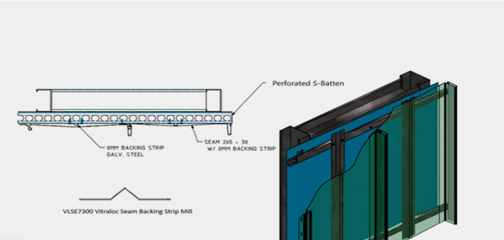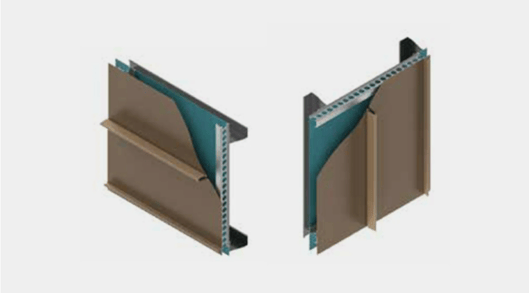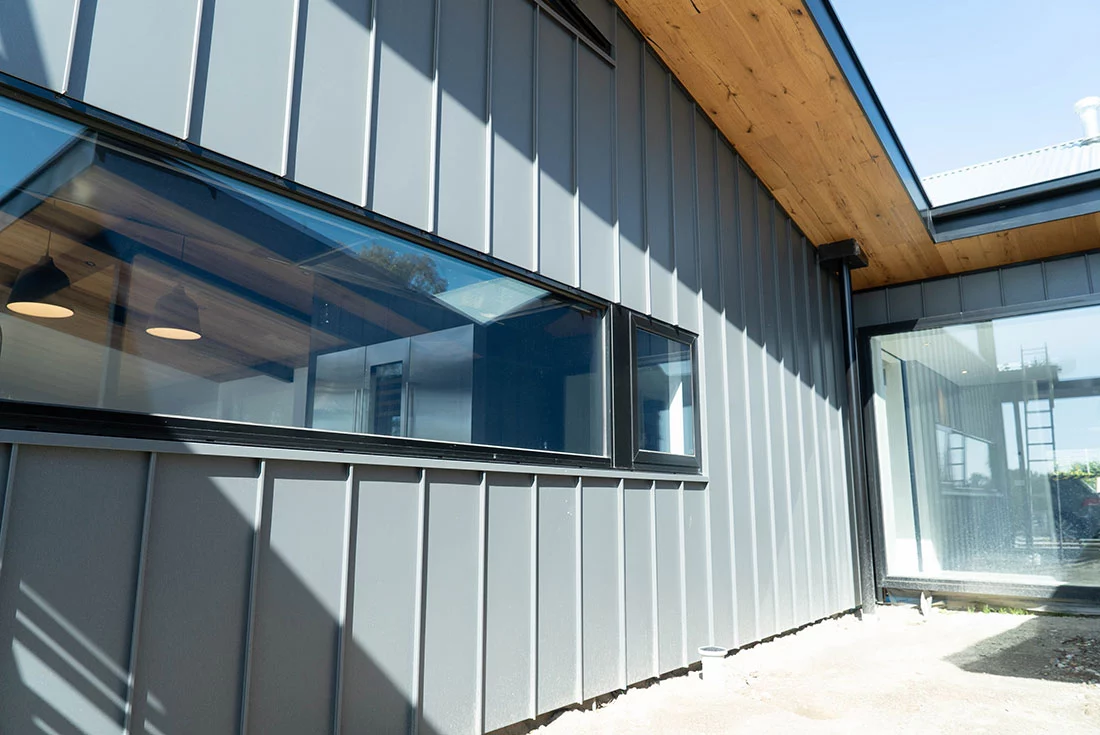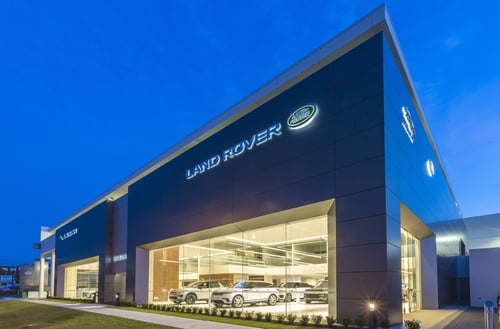Oil canning is defined as the perceived waviness of a metal panel and is an inherent characteristic of light-gauge, cold-rolled flat metal products. It’s a visual phenomenon that makes metal panels look wavy or somewhat distorted, especially in the broad, flat areas of a metal wall system.
Oil canning is simply a cosmetic effect and does not affect the structural integrity of the panel system, nor does it discriminate between the different metal types and can occur with any type of metal material used in construction.
As part of Fairview’s commitment to product performance, improvements, and innovation, Vitraloc was introduced as part of Fairview’s extensive architectural product range and shares a unique DNA with the distinctive Stryüm aluminium linear wall cladding system.
Vitraloc offers a fully detailed system and thermally managed substructure in addition to AS4284: test of building facades, and includes proprietary components specifically developed to improve performance and enhance appearance. Made from non-combustible roll-formed steel, Vitraloc provides peace of mind that comes from a tested system and freedom of expression with an extensive pallet of colour and textures.
Vitraloc – engineers solution for steel cladding:

Optional: Perforated S-Batten and Vitraloc Backing Strip – innovation to alleviate the risk of Oil Canning.
Perforated S-Batten:
The perforated S-Batten is designed to facilitate better air movement within the wall cavity and allow hot air and moisture to escape from the top of the wall system. By allowing better air movement, you reduce heat build-up behind the façade, limits thermal movement and in turn reduce the likelihood for out of plane movement along the panel surface.

Perforated S-Batten assists with:
- Moisture Management
- Thermal Management
- Movement Management
Vitraloc Backing Strip:
The Vitraloc Backing Strip is designed to sit between the standing seam section of the profile and act to induce a slight curve into the panel. The induced curvature creates a convex arch that extends the full width of the panel and helps to smooth out any waviness that may have been induced into the panel.
- Minimal movement of the battens with any movement is unison across all battens
- Controls out-of-plane distortion
- Induces a curvature to iron out any induced oil canning
The combination of the perforated S-Batten and Backing-Strip builds on the innovation of this new façade for Fairview and is what separates Vitraloc from similar products in the market.
While the default position has been to opt for a thicker material, this is not the solution, there are other effective means of managing this phenomenon while utilising materials that are more ideally suited to cladding.
Leading causes of oil canning, include:
- Stresses during the production process:
Oil canning can sometimes occur during the early stages of the coiling production. There are three separate stresses that can be induced on the metal during production that could lead to the development of oil canning:
- Full centre: The coil is longer in the middle section, which creates ripples or buckles along the centre.
- Wavy edge: The edge of the coil is longer along the edge of the strip.
- Camber: The coil deviates from a straight line when laid flat (similar to the curvature of a banana).
- Stresses during roll forming and slitting:
All metals have a “memory” which sees the material displaying a tendency of “trying” to revert back to its original form. The stresses inflicted during roll forming and slitting of the metal coil and sheets can facilitate oil canning as the metal moves and warps in response to metal “memory”.
- Incorrect fastener installation:
There are two common scenarios where oil canning could be attributed to fasteners:
- Over-driving fasteners: The over-tightening of fasteners can cause stress to the metal as it deforms due to the pressures of the fastener on the surface of the metal.
- Angling fasteners: Driving the fastener at an angle when attaching the panel to the wall can create stress that could lead to oil canning.
- Inadequate space allotted for thermal movement:
Metals expand and contract with heat; therefore restricting the expansion and contraction needed for proper thermal movement of a metal panel can lead to oil canning. This commonly occurs when panels are double pinned at the edges, which restricts the centres from moving during thermal expansion/contraction and causes stress on the metal.
- Structural changes that put tension on the panels:
Oil canning can also occur when the building experiences a shift in its structure, settles in its foundations, or experiences a force that results in a change in the building envelope from its original form.
The movement in the building needs to be sufficient to induce tension or stress on the metal panels. This influence on oil canning is infrequent but possible if the building is subjected to extreme weathering that can affect the building structure.
- Out of plane/square building structure.
Careful attention should be paid to ensure the substrate that the façade is being installed on is as close to flat and square as possible. Even small values of out of square can lead problems as most façade cladding spans lengths of up to 4 mt. The longer the span the greater the impact of any out of square on oil canning.
Vitraloc makes a visually striking and sophisticated design statement with its distinctive tall sharp ribs and flat smooth pan profiles for that distinctive bold modern architectural look. The panels are suitable for both vertical and horizontal applications and is available in two modern profiles – 38mm Seam direct-fix and 25mm Shadow interlocking panels.
Fairview has made product selection simple by offering an extensive range of standardised flashings and two profiles options in the 38mm Seam panel with a 265mm cover and 25mm Shadow interlocking panels with a 285mm (plus 15mm express joint) cover. The system has been uniquely designed to accommodate the harsh thermal movement associated with Australian construction.
Contact our team for more technical information, or prices on our non-combustible steel cladding options, or request a sample online now.



